 Petzlover
PetzloverHungarian Wirehaired Vizsla is originated from Hungary but Old English Terrier is originated from United Kingdom. Hungarian Wirehaired Vizsla may grow 19 cm / 8 inches higher than Old English Terrier. Hungarian Wirehaired Vizsla may weigh 35 kg / 78 pounds more than Old English Terrier. Both Hungarian Wirehaired Vizsla and Old English Terrier has almost same life span. Both Hungarian Wirehaired Vizsla and Old English Terrier has almost same litter size. Hungarian Wirehaired Vizsla requires Low Maintenance. But Old English Terrier requires Moderate Maintenance
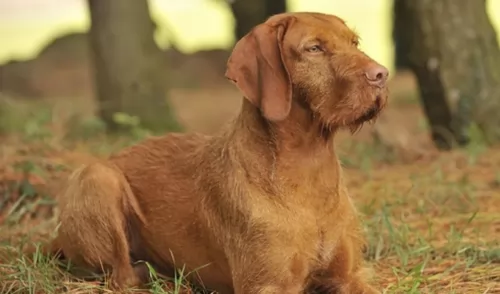 In the 1930’s some breeders noticed that the Hungarian Vizsla produced some dogs with more water, cold weather and ground cover protection because they had a much thicker coat than most of the breed. One breeder decided to cross one of these females with a German Wirehaired Pointer, thus producing the first Hungarian Wirehaired Vizsla. There were now three types of Vizsla – the smooth coated, the longhaired, and the wirehaired. The longhaired is very rare and can be either smooth or wirehaired. It is also believed based on anecdotal evidence that the original Wirehaired Vizsla was also mixed with the Bloodhound, Pudelpointer, and Irish Setter during World War II. Many kennels started breeding the Wirehaired Vizsla at this time.
In the 1930’s some breeders noticed that the Hungarian Vizsla produced some dogs with more water, cold weather and ground cover protection because they had a much thicker coat than most of the breed. One breeder decided to cross one of these females with a German Wirehaired Pointer, thus producing the first Hungarian Wirehaired Vizsla. There were now three types of Vizsla – the smooth coated, the longhaired, and the wirehaired. The longhaired is very rare and can be either smooth or wirehaired. It is also believed based on anecdotal evidence that the original Wirehaired Vizsla was also mixed with the Bloodhound, Pudelpointer, and Irish Setter during World War II. Many kennels started breeding the Wirehaired Vizsla at this time.
This rare longhaired is not recognized by any official club or organization while the smooth and the wired are recognized as two separate breeds. There are only a few longhaired Vizsla and they are only found in Europe. The Wirehaired Vizsla was recognized in 1986 by the FCI in Europe and in 2014 by the AKC (American Kennel Club).
Like their cousins the smooth Hungarian Vizsla, the wirehaired version is a natural hunter and easily trained. They are great retrievers as well as pointers in the water or on the land. Their wirehair coats offer them more protection than their smooth coated cousins. They love to swim and are very good at it and will even use your back yard pool if it is available to them.
The wirehaired Vizsla came to North America in the 1970’s and was recognized by the CKC (Canadian Kennel Club) in 1977, The North American Versatile Hunting Dog Association (NAVHDA) by 1986 and in 2006 by the United Kennel Club (UKC). The Australian Nation Kennel Council offered recognition in 2007 prior to their entrance into the AKC Foundation Stock Service. They began showing the breed at AKC events in Performance and Companionship, prior to their full AKC recognition in 2014.
These gentle hunting dogs became great family dogs as they love children and just want to be with their people. Falconers have recently taken up the breed because their temperament is suited to this work as well. There are only about 400 to 450 Wirehaired Vizslas left in the United States and few thousand across the globe.
Known also as the Black Terrier, by the 18th century, the Old English Terrier was available as a rough-coated dog as well as a smooth-coated dog.
The dogs were established in England. The dog was developed to work and by the 19th century the Old English Terrier was to be found all over the world.
The dog was developed based on the work it was required to do, leading to variations in the coat texture, the body and size. The Old English Terrier is recognized today by the National Terriers Club LLC.
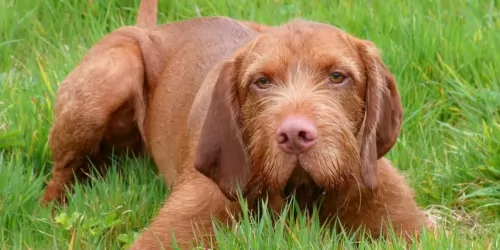 Very much like his cousins, the Wirehaired Vizsla is a noble looking breed. He is lean and muscular with a noble head and moderate skull line. Their muzzle is just a little shorter than the skull and the end is squared. They have powerful jaws and a broad, wide nostrils. The nose is brown, and the eyes are slightly darker than the dog’s coat color.
Very much like his cousins, the Wirehaired Vizsla is a noble looking breed. He is lean and muscular with a noble head and moderate skull line. Their muzzle is just a little shorter than the skull and the end is squared. They have powerful jaws and a broad, wide nostrils. The nose is brown, and the eyes are slightly darker than the dog’s coat color.
Low set ears are long and hang near the cheeks. With a strong, long neck and muscular shoulders, the Wirehaired Vizsla certainly looks the part of a hunting dog. Her chest is a little deep and the breastbone is prominent. She has round paws with short nails. Of course, her coat is wiry and dense. The undercoat is water repellent. He has an intelligent and lively facial expression.
Their ears are long but proportionate to the head and body. Their upper teeth overlap the lower teeth. Finally, the tail is thick and usually 1/3 docked. The tail is mostly carried in a horizontal position while walking or running.
The Old English Terrier is a working dog, a sporting terrier known for his athleticism. This is a vibrant dog, both physically and mentally, and the dog will require plenty of physical exercise as well as mental stimulation.
If you go to a reputable pet shop, you will find many stimulating toys for such a clever dog. He is also social and friendly and makes a wonderful pet.
Your Old English Terrier stands at between 30 – 45cm and weighs between 6 and 15kg. The face of the dog is wedge-shaped and the eyes are set wide apart. The ears are erect and the tail has been docked but is left long these days.
The coat of the dog can be either rough or smooth and it is available in solid black or white or a black and tan mix.
The Old English Terrier is a working and sporting terrier. He makes a wonderful companion pet. He is an intelligent, boisterous type of dog and early training and socialization are necessary to make him obedient and more amicable around people and pets.
They are loving with their human family, but because they require such vigorous exercise, they are better suited to life in the countryside as opposed to living in a cramped space in the city.
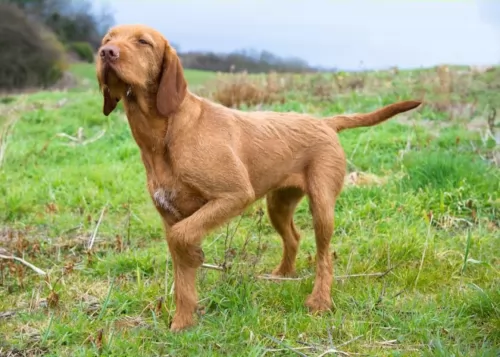 Very good with children as long as he gets enough exercise.
Very good with children as long as he gets enough exercise.
Very athletic
A puppy could live in an apartment in the city, but the adult dog needs a yard and is better off on a farm.
Very smart, very responsive, high learning ability.
Your Old English Terrier is a working dog and while he is known to be independent and sometimes quite stubborn, he is intelligent and trainable.
He should be trained and socialized and then he becomes a great family pet, being amicable with children and other pets. He is a good natured pet but he has lots of energy and will rely on you to provide him with walks and games, whether you live in the city or the countryside.
Give him the right upbringing and you can be assured of the most splendid pet and companion.
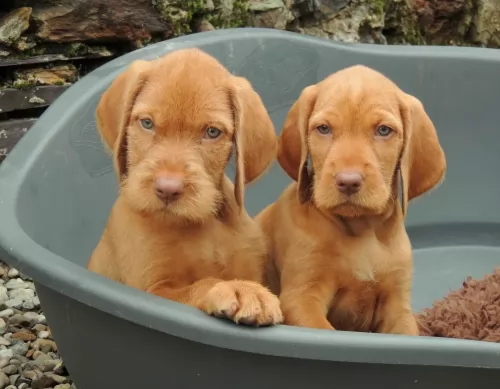 Mostly healthy but the Hungarian Wirehaired Vizsla does have some inherited dispositions to:
Mostly healthy but the Hungarian Wirehaired Vizsla does have some inherited dispositions to:
There are some health problems with a dog that can be inherited, but some illnesses develop because of bad lifestyle and bad diet along with lack of exercise.
Your Old English Terrier can live to anything from 10 to 14 years of age, but there are always some common dog diseases that you may want to be aware of.
Dental disease, skin allergies, hip dysplasia, cancer, epilepsy, bloat and eye diseases are just some of the diseases that are highly unlikely, but which can be worrisome for your pet.
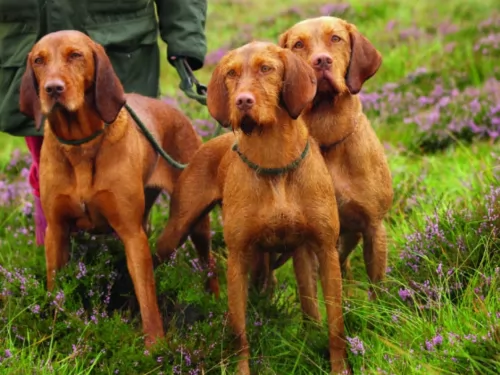 Feed high quality food for medium to large breed puppies. Feed 3-4 time a day 1-2 cups.
Feed high quality food for medium to large breed puppies. Feed 3-4 time a day 1-2 cups.
Feed high quality food for adult medium to large dogs. Feed 2x a day 2-3 cups.
Great stamina and very athletic breed.
The Wirehaired Vizsla is a working dog and needs serious daily exercise. He will be full of energy and excitement if he doesn’t get enough mental and physical stimulation. He needs a family that can walk a mole or two every day or jog with him. He easily becomes neurotic and high-strung if his energy is not dissipated. Excels at Field Trials, Competitive Obedience, tracking and Barn Hunt.
Looking after your Old English Terrier is easy, whether you choose the short- or long haired breed, requiring you to brush him twice a week to remove those loose hairs. Check in and outside the ears for ticks and fleas and check around the eyes for infections.
Always run your hands over your dog to make sure there are no unusual lumps which could be indicative of cancer.
Make sure your pet has a nice dry, warm place to sleep, and if he is outdoors, make sure he has a spot to lie down in that is out of the sun and rain.
He is an active dog and will require a walk each day as well as ball- and rope games.
Every dog will benefit from a high quality diet, both commercially manufactured food and home-made food. Dogs want their meals to be simple, tasty, consistent and delicious.
Dry kibble needs to be of a high quality and you can add in simple home-made food to his kibble and which is simple – boiled chicken, brown rice or pasta and vegetables such as spinach, sweet potatoes and carrots. When you can afford it, some raw meat added into the kibble will be a welcome treat.
Such a simple diet will ensure you don’t battle with your dog’s digestion and it will keep him bright-eyed and healthy. Ensure a constant supply of fresh, cool water.